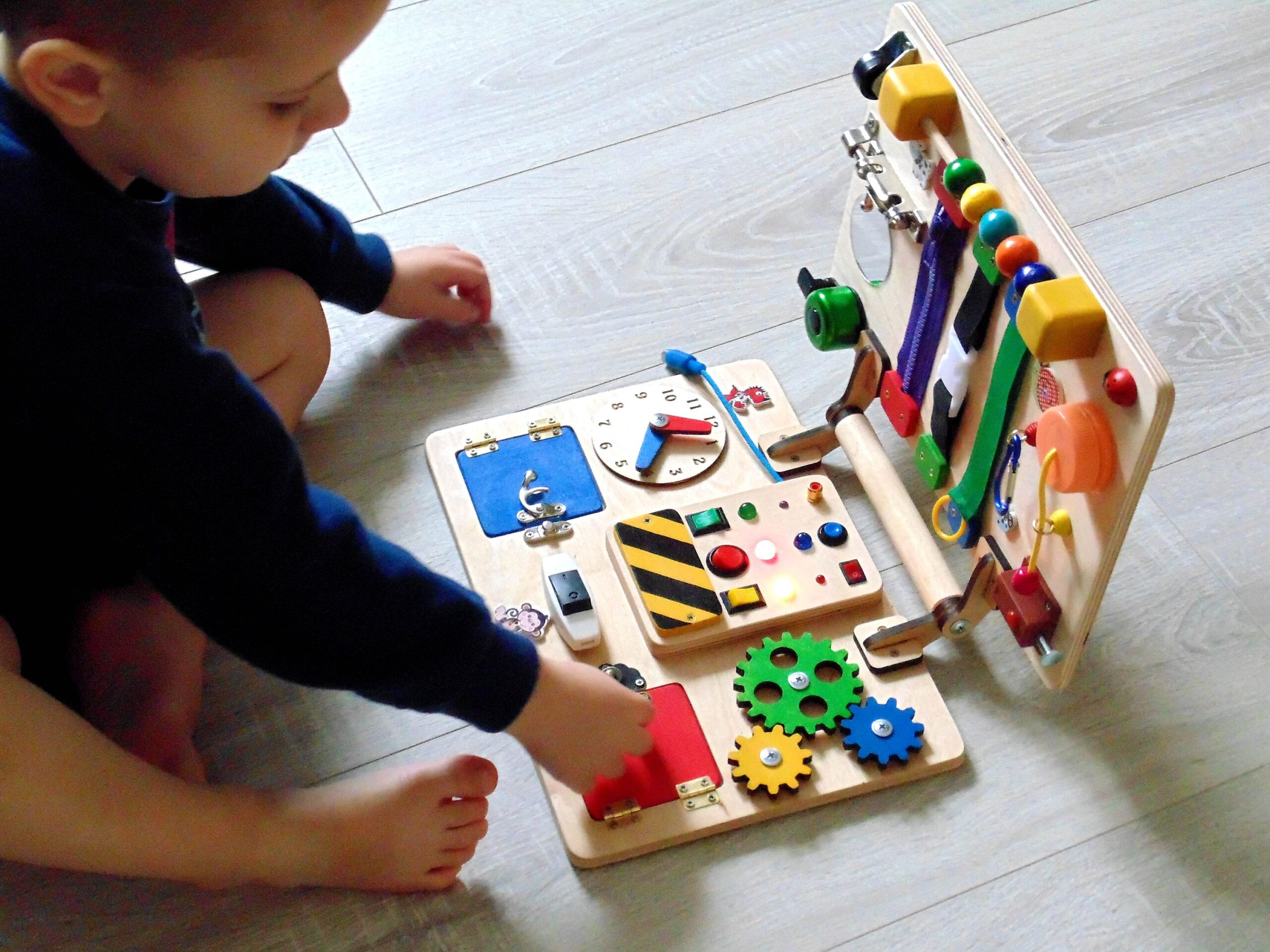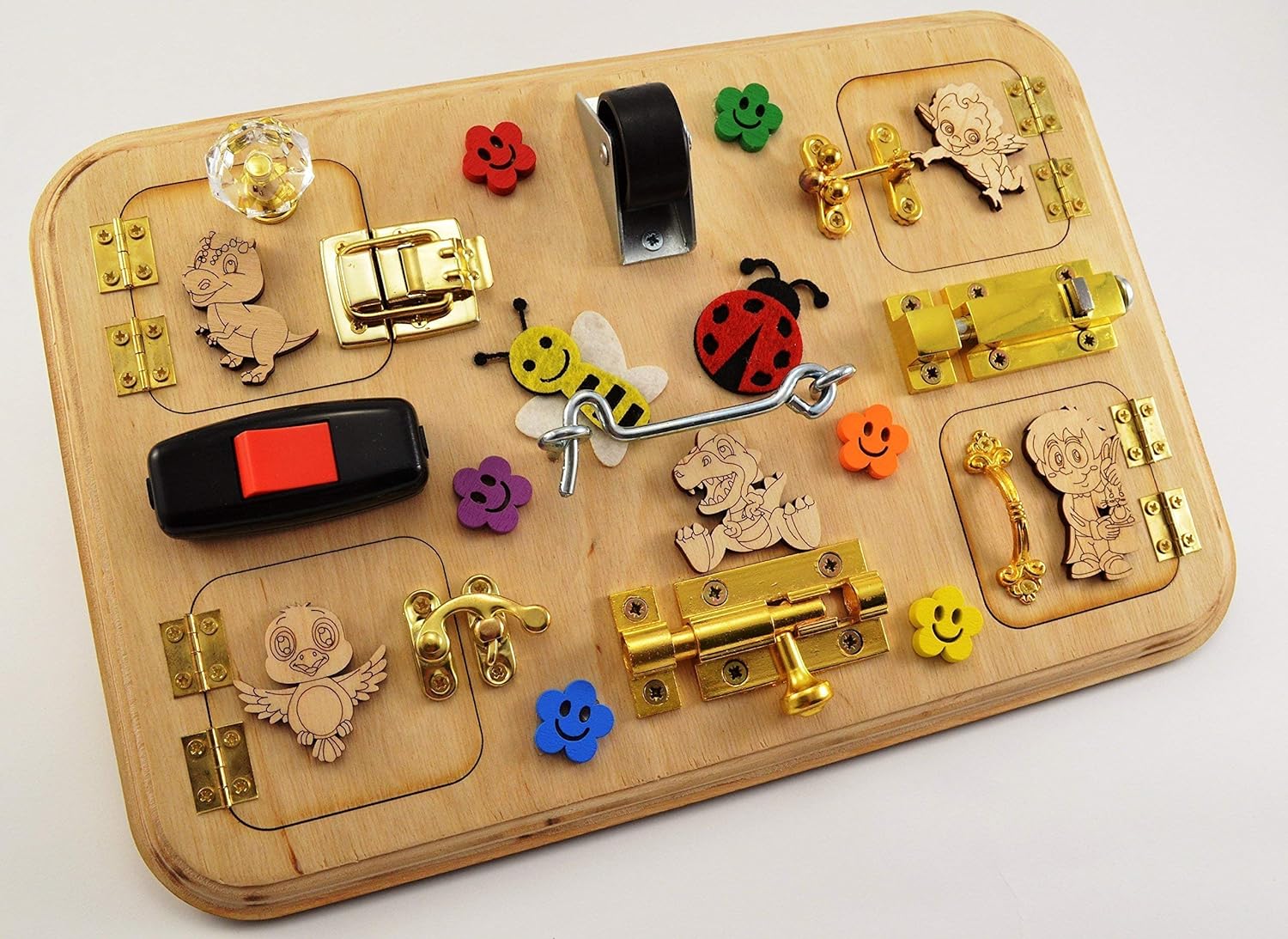Blog
The Ultimate Guide to Choose the Right Montessori Busy Board
Hey there, fellow parents and caregivers! If you’re on a quest to find the ultimate educational toy for your toddlers, you’ve likely stumbled upon the Montessori method. Known for its hands-on approach to learning, this philosophy not only encourages your child’s independence but also engages them in play that fosters their creativity, cognitive skills, and fine motor abilities. Among the treasures of Montessori materials, busy boards hold a special place. As a parent, you’re probably thinking: “What exactly is a Montessori busy board, and how do I choose the right one?” Don’t worry, I’ve got you covered. Let’s dive into the world of Montessori busy boards and explore how to select the perfect one for your tiny tot!

What Exactly Is a Montessori Busy Board?
A Montessori busy board, often referred to as a sensory board or activity board, is a tactile learning tool designed to engage children in hands-on activities. Picture a sturdy board adorned with an assortment of everyday objects that your little one can touch, manipulate, and explore. From buttons and zippers to locks and laces, these boards offer a sensory experience that can entertain and educate.
Busy boards cater to children of various developmental stages, typically from about 6 months to 3 years old. They’re fantastic for promoting fine motor skills, hand-eye coordination, and cognitive development while allowing your child to explore the world around them.
>>>Buy now:
The Benefits of Busy Boards
Before we get into choosing the right one, let’s chat a bit about the incredible benefits that busy boards offer:
- Sensory Exploration: Busy boards stimulate different senses. Kids can see, touch, and sometimes even hear the different objects, making learning a rich and immersive experience.
- Fine Motor Skills Development: By manipulating various elements on a busy board, your toddler can improve their dexterity and coordination, which is essential for future skills like writing.
- Problem-Solving Skills: Trying to figure out how to unfasten a clasp or fit a shape into a corresponding hole encourages critical thinking and problem-solving abilities.
- Independence: Kids love to do things for themselves! A busy board allows them to play independently, fostering self-confidence and autonomy.
- Focused Playtime: As children engage with the board, they learn to concentrate and focus on a task, crucial skills that will benefit them academically later on.

What to Look for When Choosing a Montessori Busy Board
Choosing the right busy board can be a bit overwhelming with so many options out there. Here are some key factors to consider when selecting the perfect one for your child:
- Age Appropriateness
First and foremost, consider your child’s age. Busy boards designed for younger infants might focus more on sensory experiences—think soft textures and simple objects—while those tailored for toddlers typically include more complex manipulatives. Look for a busy board that aligns with your child’s current developmental stage.
>>>Read more: Teach Your Child Responsibility and Boost Confidence with this Simple Daily Task: Cleaning a Table (or a chair)
- Material Quality
Safety and durability are paramount when it comes to children’s toys. Opt for busy boards made of non-toxic materials, like high-quality wood or BPA-free plastics. Ensure that surfaces are smooth and free of splinters or sharp edges, and always check for any small parts that could pose a choking hazard.
- Variety of Activities
Diversity is the name of the game! A busy board should offer a range of activities to keep your child engaged. Look for boards that include different types of closures (like zippers, buttons, and buckles), shapes to fit, and textures. This variety will not only keep your child entertained but also enhance their learning experience.

- Portability
If you’re a family on the go, consider the size and weight of the busy board. Some boards are designed to be easily portable, allowing you to take them on road trips, to the park, or even just from room to room in your home. A lightweight and compact option can be a lifesaver!
- Aesthetic Appeal
While functionality is critical, let’s not forget about looks! Choose a busy board that complements your home decor or one that appeals to your child’s interests. Bright colors or fun themes can engage your child’s attention and make playtime more enjoyable.
- Customizable Options
Some parents choose to make their busy boards at home, adding a personal touch. If you’re crafty, consider customizing a board with specific items that reflect your child’s interests. Whether it’s adding themed decorations or incorporating their favorite colors, a custom board can have added sentimental value.
Conclusion
Finding the perfect Montessori busy board for your little learner can be an incredibly rewarding experience. Not only does it serve as a valuable educational tool, but it also provides countless hours of fun. Remember to consider your child’s age, safety, activity variety, and your family’s needs as you browse through options.
With the right busy board, you’re not just giving a toy; you’re providing your child with a gateway to exploring the world around them. So grab that busy board and watch your child’s curiosity and creativity soar! Happy playing, and here’s to endless adventures in learning!
